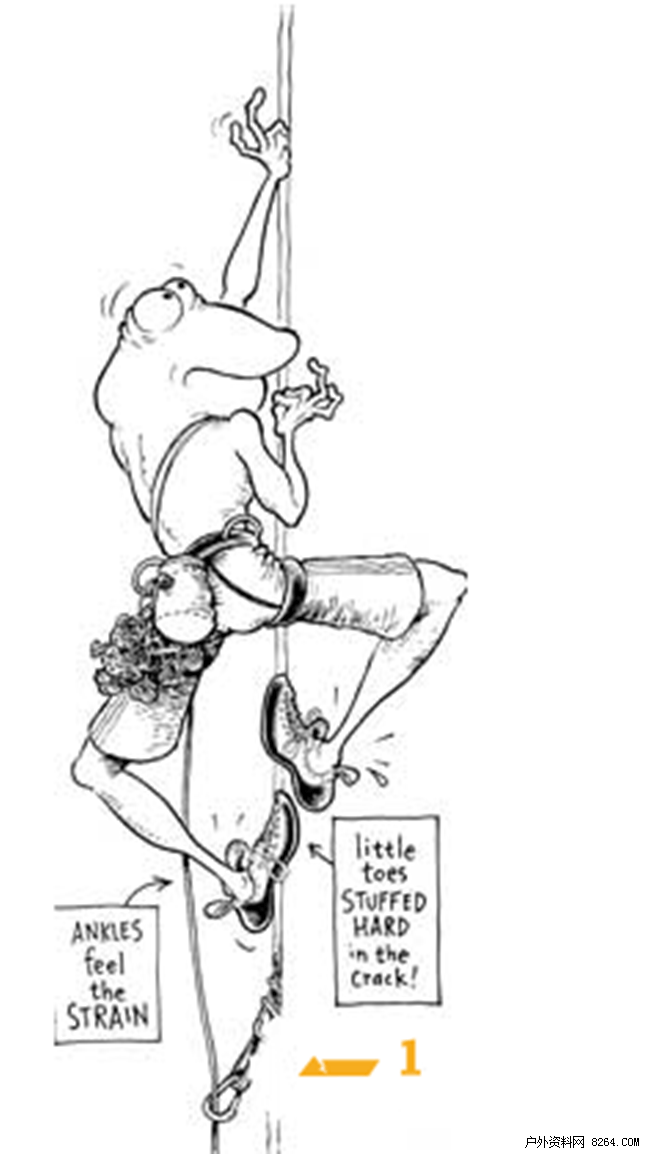Have you ever felt awkward when climbing a crack? It is normal if there is no solid footwork despair. Whether you are trying to conquer a hard line on a piece of granite or a crack in Indian Creek, the following tips can help you better grasp the various fingerings and palms.
basis. The basic foot-bending technique is best suited to practice on hand cracks, because in this width of cracks the foot can be wedged very firmly. Choose a pair of rock shoes that will allow your toes to stretch. First, weave the toe-to-foot portion into the crack (large toe on top, little finger on bottom) and keep the knees out. Next, turn the knees inward (in the direction of the crack) and twist the rock shoes until they get stuck in the cracks. Keep your arms straight and bend your waist to lift the other leg. This may be a bit confusing, but once the leg is stepped on, the weight will turn to the foot again.

With both feet stuck, lift up with your legs, keep your pressure on your feet, and put your buttocks at the end of each movement. Snapping against the rock wall, the weight changes from your arm to your feet. Your ankle should be the focus point of the force, and the hands only maintain the stability of the movement during the standing. The above are basic skills. The narrower the width of cracks, the more skill you need to get up your feet. At the same time, don't forget to observe the edges and protrusions that may be on the edge of the crack. If there are cheaper points, why not catch it?
For crackers and ratchets, cracks that can accommodate the width of the thumb using both techniques can be worn in flat rock shoes to get a better wedge, but to climb The more force, use frogs. The way is to keep your feet high and close to each other and your knees open on both sides. Then, turn your knees inwards while your legs are pushing and repeat. You can only squeeze your little toes into the cracks, with the heel down and the toes facing up, trying to use the outer surface of the rock shoes to get into the cracks. Your ankle should be in a stressful state to maintain full pressure, and your little toes may feel pain, which is the result of forced into the cracks.

Folding fingers, bare fingers, and fingertips. (Translator's Note: these finger thumb can not be placed into the cracks) in climbing these fingers apply to the narrower cracks to ensure that the foot position is high enough, and do not put the hand too far, so the foot will be very bad control. Wear tight rock shoes to better step on the small side of these difficult cracks.
Rotate the foot in a similar basic technique, focusing on using the upper side of the little toe to break into the crack. Pay attention to the use of even small irregular changes in the cracks, put the toes close to the imaginary plane of cracks, and desperately apply force to the edge of the crack. When the crack is in two angled faces, both feet may be more laborious in the crack, because there is more contact area, so you can try to use one foot to wedge into the crack and the other to rub Rock face. I use the vigor of breastfeeding and insist that victory.
Now that you have a theory, you need to put it into practice. It's better to practice the techniques with the top rope. To improve these skills, you must concentrate on your feet and save your strength on your arm. Climbing the cracks will damage the ankles and the feet will hurt, so keep the speed to pay attention to the consistency of the movement; delaying in an awkward posture is the most undesirable. As these techniques continue to mature, you will be able to fly on the narrow cracks of these metamorphosis, and you should not be happy to laugh.
Discover the earth by beautiful and creative Kids Globe.
Kids Globe,World Globe,Earth Globe,World Globe For Kids
Ningbo Holly Arts & Crafts Co.,Ltd. , https://www.china-globes.com